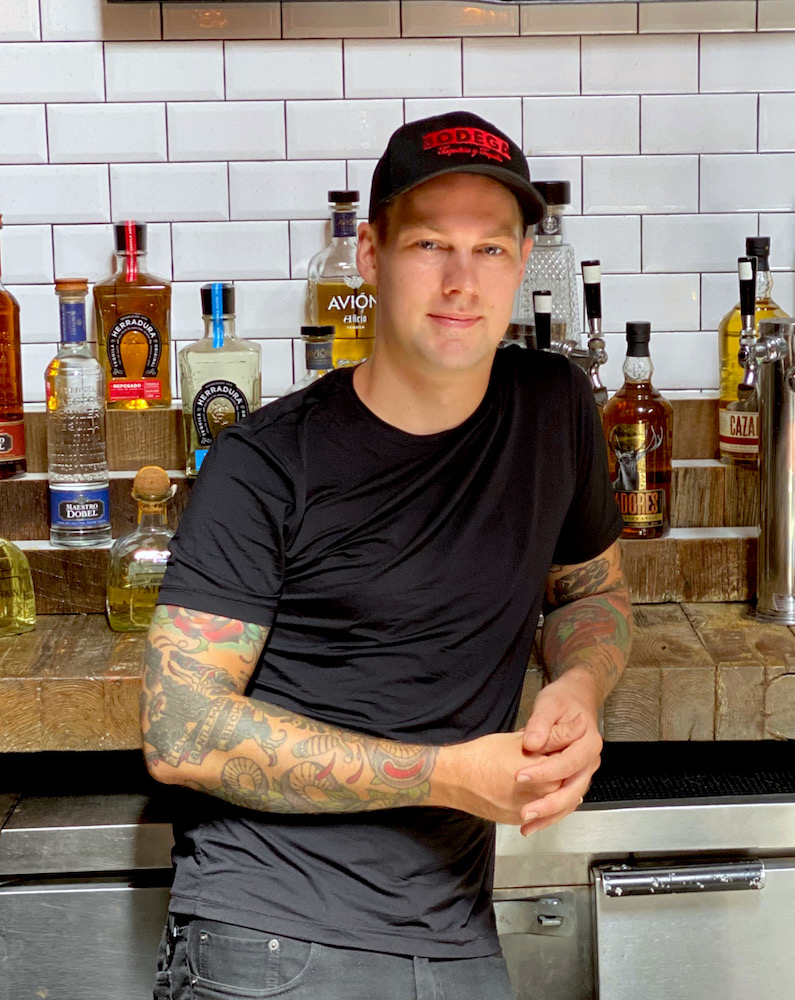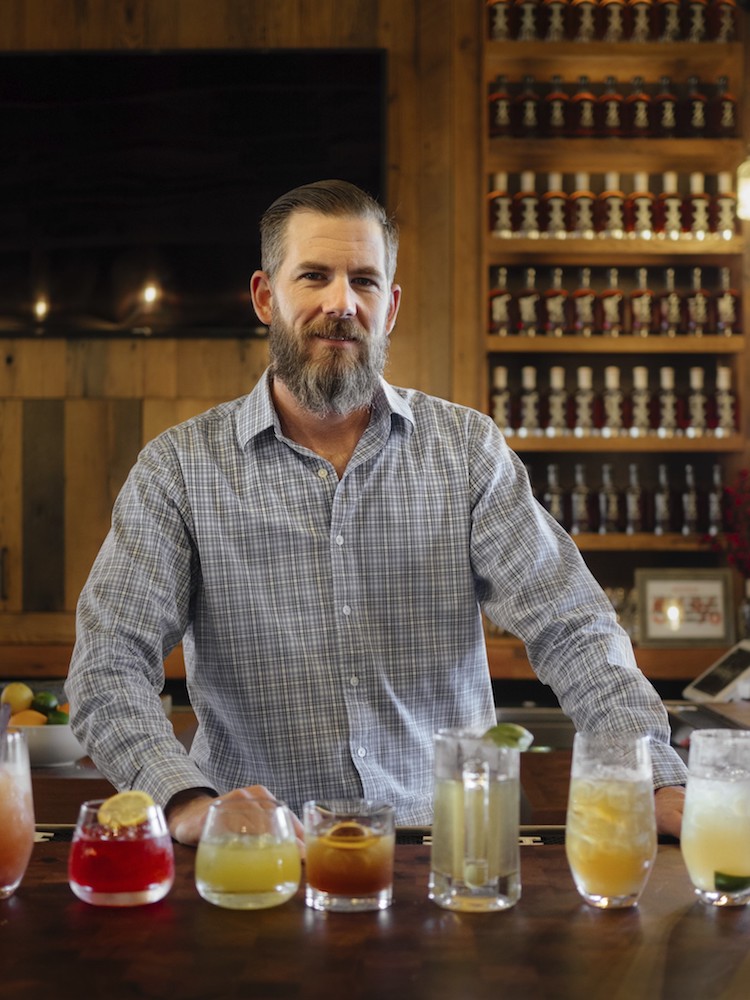Consumers mixing cocktails at home was already a trend before the pandemic. But the COVID-19 crisis — with lockdowns and on-premise closures — has undoubtedly spread and accelerated this movement.
“Given the unfortunate circumstances limiting access to bars, many people have looked into exercising their at-home bar,” says Hayden Miller, head bartender at Bodega Taqueria y Tequila In Miami Beach, FL.

Much of this has to do with our new schedules. We spend a significant amount of time stuck at home, working and then trying to unwind. And what’s a better way to end another home workday then with a freshly made cocktail?
“A lot of people have a lot of time on their hands right now, and it’s a great time to experiment,” says Jason Shelly, resident mixologist for Firestone & Robertson Distillery, the company behind TX Whiskey. “Making cocktails at home has come a long way in the last five to six years. At-home cocktail bars are super in-vogue right now.”
So how can beverage alcohol retailers take advantage of this booming trend? By stocking up on the essentials. That means cocktail-making kits — the actual equipment — plus cordials, liqueurs, bitters, garnishes and the go-to spirits that any aspiring mixologist would need.
“All kinds of cocktail-related products are on the rise,” says Melissa Reigle, beverage manager and head bartender at Byblos Miami. “Mixology kits are certainly on the rise, but the ready-to-drink market, which was slated for 25% growth in 2020, has exploded in unexpected ways.”
Most retailers have already seen a spike in sales for these products during the pandemic.
“I bet a few cocktail recipe books have been sold as well,” says Chris Morris, Woodford Reserve master distiller. “The base of so many cocktails — bourbon and rye — has been flying off the retail shelves. “
To his point, large-format bottles of vodka and whiskey remain hot commodities at retail. Consumers looking to dabble in cocktails are buying bigger bottles to support their experimentation.
“Have fun! Be adventurous,” Reigle recommends for these customers. “Try different flavors and mixtures. Balance is key in creation, though. You want a cocktail that has a little of everything — a little acid, a little sweet, a little bitter, a little spice. This is what creates complexity. You can do this with simple ingredients, in proper proportions”
Want to stock up on ingredients? Shelly suggests Vermouth, bitters and sugar for Manhattans. For sour drinks, get lemon juice and simple syrup. “You can make your own simple syrup,” he adds, “which is easy.”
“For the lesser-experienced cocktail-maker, just get lemon, limes, some kind of sugar, honey, agave nectar, black berries, strawberries, or rosemary if you have a garden at home,” he continues. “You can make a plethora of drinks this way. Rummage around your pantry to see what you have. Even children’s juice boxes can be the start of a cocktail. Pancake syrup, maple syrup, apple juice and whiskey. Experiment with what you have at home. Throw a stick of bacon in there!”
Another source of fun is using fancy glassware. Shelly urges people to revisit what they inherited from their grandparents. “All that glassware you have lying around from the ‘50s and ‘60s, those old coupe glasses,” he says. “It’s time to break them out. Stick in some rosemary and put the coupe on a silver platter and some fun times on your patio. It’s not like there are any wrong answers with at-home mixology, per say.”
Simplicity is a theme for many consumers who are just now trying their hands at mixology.
“It seems like the simpler classics have been more prominent and popular, such as the Margarita, Negroni, Old Fashioned, etc.,” says Miller. “Don’t be afraid to try making classic cocktails at home — that’s why they’re classics!”

Even cocktail-making instruments can be on the simpler side. For anyone who does not want to purchase brand-new gear, Shelly suggests rummaging around your kitchen for substitutes.
“A teaspoon is two ounces,” he says. “A mason jar can become a shaker.”
Kat Hantas is co-founder of 21 Seeds Tequila, and regularly hosts cocktail classes on social media and television shows. She, too, stresses simplicity.
“When I do these Zoom or live things, I tell people how I don’t like math,” Hantas explains. Instead, she reassures viewers that it’s okay to eyeball measurements. “Nobody has a 1-oz. shot glass at home. Not one human being. But you know what half an ounce is? One squeeze of a lemon or lime. A 3-oz. pour is a three-count pour.”
“I try to convey that to the consumer all the time,” she continues. “They just want to have a great cocktail to freshen up their day.”
These are the end-of-the-workday drinks that consumers once ordered at their favorite bars and restaurants. So the question remains: once this country (eventually) reaches the other side of the pandemic, how strongly will the at-home mixology movement continue?
“There is sure to be some degree of crafting cocktails at home going forward, but I believe that for most of us will gladly return to our old practices,” says Morris of Woodford Reserve. “If there is anything I have learned from making my own cocktails at home, it is that I am an amateur. To get a truly creative drink requires a well-stocked bar and the practiced hand of a professional.”
The pros agree.
“People will surely become more versed in cocktail knowledge and preparation, but there will undoubtedly still be a large desire for those experiences that cannot be replicated at home,” says Miller. “The hospitality industry would not exist without customers, but it is definitely a mutually beneficial relationship.”
One day, hopefully sooner than later, we will all safely return to our old haunts, where our favorite bartenders know just what to recommend. In the meantime, however, at-home mixology remains one of the biggest alcohol trends of 2020. And there’s plenty of room in it for everybody.
Kyle Swartz is editor of StateWays magazine. Reach him at kswartz@epgmediallc.com or on Twitter @kswartzz. Read his recent piece What Alcohol Consumers Are Buying, Months into COVID-19.










